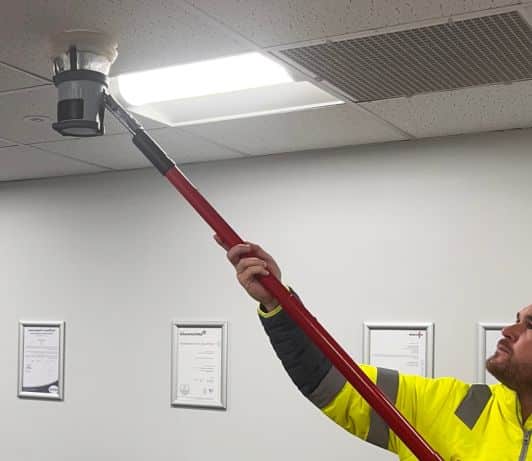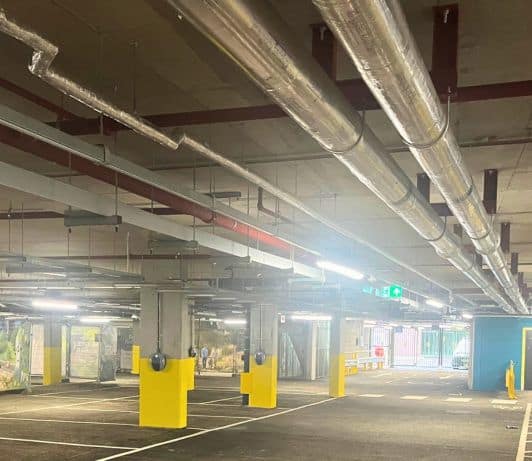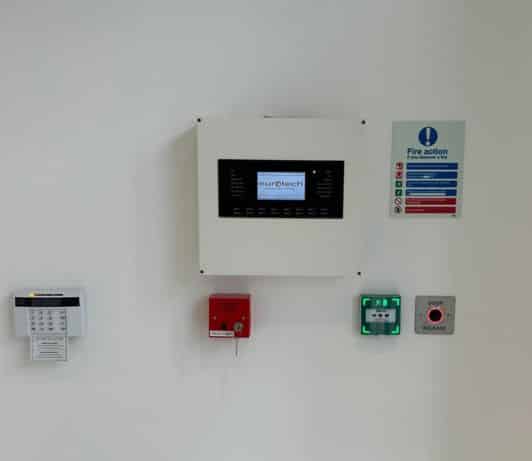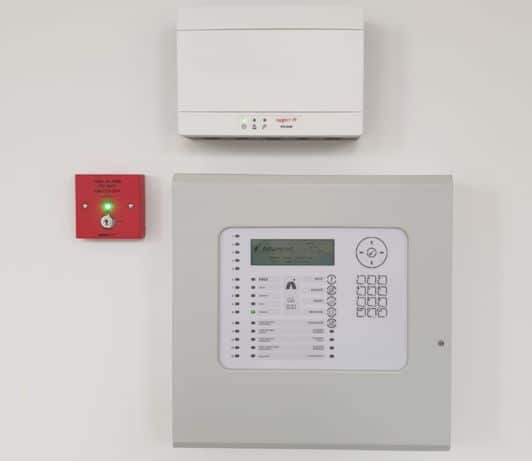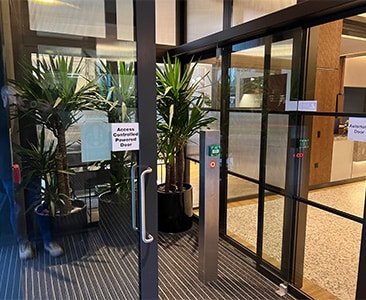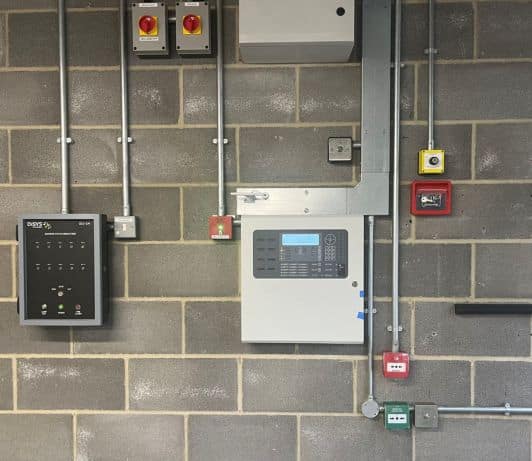Essential Fire Alarm Regulations For Your Safety
Fire alarm systems are paramount to the safety of all forms of premises, both domestic and commercial. There are stringent fire alarm regulations in place across the UK regarding the installation and maintenance of fire alarm systems to reduce fire hazards and protect lives and properties.
Understanding these guidelines and fire alarm regulations is vital to ensuring successful fire alarm installation. At Nomcio Fire & Security, we operate under these regulations and all our fire alarm services are done according to national guidelines for your utmost safety.
In this guide, we share everything you need to know about fire alarm installation, including an oversight into these national regulations, so you can ensure you are protecting your premises and the lives within it as required.
Types of Fire Alarms
Before you can even consider fire alarm installation, you first need to understand the types of fire alarms available and which is going to be your best option.
With a clear understanding of the types of fire alarms available, you can be an active participant in your fire safety and ensure that fire alarm installation meets the required guidelines for your property.
There are five main types of fire alarms available to our customers:
Manual Fire Alarms
Manual fire alarms are those which need to be manually operated. In the event of a fire, a call point will need to be pressed or a fire glass unit should be broken to activate the alarms and alert to a necessary evacuation of the premises.
These types of fire alarms are common in buildings with high foot traffic, such as schools, offices and public buildings. Manual fire alarms in these locations allow occupants to easily reach the alarm and alert the rest of the building to any risk of fire, ensuring a quick and safe evacuation can be performed.
Automatic Fire Alarms
As the name suggests, these fire alarms will activate automatically and are triggered by signs of fire like smoke, heat or even carbon monoxide through the sensors.
Automatic fire alarms are incredibly useful because they activate themselves and can alert occupants to risks that they may not have been aware of themselves, such as carbon monoxide. These kinds of fire alarms also offer early detection even when no one is present, as they are automatically triggered, which is why they are ideal for residential settings or other buildings that will be unoccupied at times.
Conventional Fire Alarms
Conventional fire alarms operate by dividing the property into different zones where separate fire alarms can be triggered. When a fire alarm is activated, the control panel will show which zone has the fire hazard allowing responders to locate the fire and put it out quickly and easily.
It is important to note that with conventional fire alarms, the whole area will be highlighted on the control panel not just the specific area of the fire. This means responders can go to the right place within the building quickly but will not know whereabouts in this zone the fire is.
Fire alarm systems like this are ideal for large industrial plants or similar large premises where areas can be sealed or are operated independently.
Addressable Fire Alarms
Addressable fire alarms offer a sophisticated approach to fire safety as a unique address can be assigned to each detector or call point within the system. This means that when a fire alarm is triggered, the exact location will appear on the control panel so responders can provide a rapid response directly to where they are needed.
These fire alarms are often used in residential locations, such as apartment blocks or similar housing areas such as sheltered accommodation.
Wireless Fire Alarms
Wireless fire alarms are a modern approach to fire safety and rely on radio signals to communicate between devices and the control panel. With a wireless connection like this, there is no need for extensive wiring and fire alarms can now be installed in harder-to-reach or remote areas.
With this in mind, wireless fire alarms are ideal for buildings where installing wires is not possible or where there is an aesthetic concern.
Legal Requirements and Guidelines For Fire Alarm Installation
In the UK, fire alarm installations must comply with the specific regulations and standards that have been set out by governing bodies to ensure their effectiveness and reliability. These standards are followed nationally to ensure a uniform standard of safety, protecting lives and properties across the country.
The primary regulatory framework is provided by the Regulatory Reform (Fire Safety) Order 2005. This order outlines the responsibilities of building owners and occupiers in maintaining fire safety and sets the guidelines for fire alarm installation in order to meet these.
Understanding and complying with the national legal and safety requirements is paramount to ensure the security of your premises when it comes to fire alarm installation. There are three major regulatory sections that you need to be familiar with to ensure this.
BS 5839-1:2025: Fire Alarm Systems in Non-Domestic Premises
BS 5839-1:2025 is the British Standard regarding the design, installation, commissioning, and maintenance of fire alarm systems in non-domestic settings. This regulation is in place to ensure the highest levels of protection to your premises and is designed to ensure uniform standards regardless of each building’s unique layout, as well as the occupancy and fire risks.
Fire Alarm Design
BS 5839-1:2025 outlines the national regulations for fire alarm design and indicates that all fire detection systems must aim to provide early detection of fires. This early warning is required to secure the safety of people and reduce property damage in the event of a fire.
Fire alarm design can only meet these standards following a consideration of the premise’s layout, occupancy and unique fire risk factors so a unique design for optimal fire protection can be developed.
Installation
Once the right design for fire alarms has been considered, according to national guidelines, the installation can begin. This is another integral element for fire safety and will vary for each premise.
According to the BS 5839-1:2025 guidelines, fire alarm installation needs to adhere to the highest standards and meet the best practices which include the correct placement of both detectors and call points across the premises.
The right placement for fire alarm detectors and call points are those that allow for quick detection and alarm activation during emergencies, which will vary based on the needs of the premises.
Commissioning
The work does not end once your fire alarm has been installed, as the BS 5839-1:2025 guideline indicates that the system needs to be commissioned by a competent, qualified individual.
Commissioning covers a rigorous testing process for the fire alarm system to verify its functionality and alignment with the national guidelines in terms of design and installation requirements. The commissioning process is a way to ensure that your fire alarm system is fully operational and adheres to the relevant national regulations to ensure your utmost safety.
Maintenance
Following the initial commissioning of fire alarm systems, additional maintenance is required to ensure your fire alarm system continues to meet national regulations. Regular maintenance is outlined in BS 5839-1:2025, both weekly testing as well as annual inspections, to ensure your fire alarms continue working as intended.
With regular maintenance, any issues can be identified and remedied early to avoid issues during emergencies. This ensures that your fire alarm system is ready to alert you to any hazards and offers the protection you need during a fire.
Weekly testing is done to ensure the detectors are working and will trigger alarms during the event of a fire. The annual inspection is a deeper look into the whole system to ensure every element is operating as intended and meets the current guidelines based on your premises, occupancy and fire risks.
Overall, the BS 5839-1:2025 guidelines ensure that fire alarm systems are designed, installed, and maintained to the highest standards to ensure your safety in non-domestic premises.
BS 5839-6:2019: Fire Alarm Regulations For Domestic Premises
BS 5839-6:2019 outlines the requirements for fire alarm systems in domestic premises to protect both human life and reduce risk to the property. These regulations are specifically focused on residential properties, such as home environments, and work to target the unique needs of these spaces in terms of layout, purpose and fire risks.
Much like BS 5839-1:2025 for non-domestic premises, BS 5839-6:2019 offers practical guidance for homeowners, tenants and landlords in terms of the best practices for fire safety.
BS 5839-6:2019 covers the specific fire alarm installation requirements for domestic premises, outlining the ways that fire alarm systems should be used in residential premises to ensure the safety of all occupants. It also outlines the required maintenance schedules for residential premises to ensure protection during emergencies and offer peace of mind to residents.
Both fire alarm installation and maintenance need to be uniquely tailored to fit the specific requirements of all domestic properties, similar to those of non-domestic premises. BS 5839-6:2019 sets the standards for this work, but there will need to be adjustments to ensure fire safety is guaranteed in all homes and residential locations regardless of the property type, size, and layout.
The Regulatory Reform (Fire Safety) Order 2005
The Regulatory Reform (Fire Safety) Order 2005 has significant implications for both building owners and occupants in regard to fire safety. This is a crucial part of UK legislation regarding fire safety and focuses on the importance of regular fire risk assessments, as well as the installation of appropriate fire safety systems at all premises.
This Reform is not a mere suggestion, but a compulsory requirement as per UK law which ensures the safety and wellbeing of all occupants in any space.
Neglecting, ignoring, or failing to comply with this mandate can lead to hefty consequences, as the law takes this violation seriously. There are systems in place across the UK to deal with any form of non-compliance with the Fire Safety Order.
Those who fail to meet these guidelines can face serious penalties, including substantive fines or even prison sentences, which shows the severity and importance attached to this legislation.
Fire Alarm Installation Best Practices
With a better understanding of the UK requirements for fire alarm installation, it is time to consider the recommended best practices for this work.
At Nomico Fire & Security, we operate under these best practices in all fire alarm services to ensure the highest standards of safety for our clients. For fire alarm installation, the following practices need to be followed and considered:
Best Placement of Detectors
Smoke detectors are an essential part of any fire alarm system as they can ensure early detection of fires. To ensure they operate at their best and offer the highest standard of protection, they need to be installed on ceilings or high on walls as smoke rises.
Heat detectors are often used in conjunction with smoke detectors and should be installed in areas where a smoke alarm can trigger a false alarm, such as kitchens.
Avoid Obstructions
During fire alarm installation, detectors need to be kept free of all obstructions and these standards should continually be met to ensure proper functionality.
Detectors should be kept free of obstructions like furniture, decorations or structural features which could hinder their ability to detect smoke or heat and trigger the alarm when needed.
Integration with Other Systems
While this is not a legal requirement, it is recommended to integrate your fire alarm system with other safety and security systems to enhance your protection.
Fire alarm systems can be seamlessly integrated with sprinkler systems, emergency lighting and even security alarms so you have complete control over your premises with this comprehensive safety solution.
Regular Testing and Maintenance
As outlined in the legal requirements for fire alarms, regular testing and maintenance are required to ensure your systems remain operational. The law on fire alarm regulations requires weekly tests and annual inspections of fire alarm systems, but you can also incorporate monthly checks of batteries into your routine to ensure functionality.
The annual inspection of fire alarm systems needs to be performed by a professional to ensure all required standards are met.
Contact Us
For more information about our fire alarm installation services and to talk to us about fire alarm regulations or to schedule a consultation, please contact us today.
Our team of expert engineers will help you achieve the highest levels of fire safety and protection.

